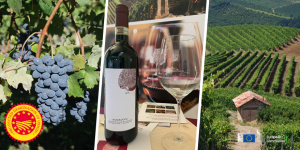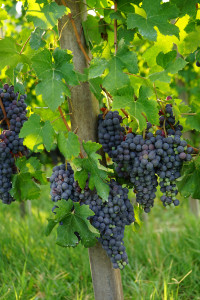Nearly five years after its approval by Italy’s Ministry of Agriculture and its original application to the EU, the Nizza DOCG is signed, sealed, and delivered…and has received its final approval and registration as an EU-protected designation of origin (PDO) product for its Barbera-based red wines.
We’ve been enjoying the deep red wines of the Nizza DOCG (produced in Piedmont, Italy) for several years now, but as a reminder, here are the rules and regulations for Nizza DOCG wines:
- The place: All grapes must be grown within a delineated geographic zone, which was an already-established subzone of the Barbera d’Asti DOCG. The allowed communes of production include Agliano Terme, Belveglio, Calamandrana, Castel Boglione, Castelnuovo Belbo, Castelnuovo Calcea, Castel Rocchero, Cortiglione, Incisa Scapaccino, Mombaruzzo, Mombercelli, Nizza Monferrato, Vaglio Serra, Vinchio, Bruno, Rocchetta Palafea, Moasca, and San Marzano Oliveto.
- The vines: Every vineyard destined for the Nizza DOCG must be registered with the Consortium and tout particular soils and exposures. Vines must be entirely estate, planted on the slopes of hills facing south-east to south-west.
- The harvest: Harvest must be done entirely by hand.
- The grapes: 100% Barbera
- Alcohol: Minimum 13% abv
- Aging: Total minimum aging is 18 months from January 1 of the year following harvest. Total aging time must include at least 6 months in oak.
In addition, all wine bearing the “Nizza DOCG” designation must meet the standards set forth by the consortium for organoleptic properties and laboratory analysis. If a wine does not meet with the consortium’s approval, it may be de-classified and bear the title of Barbera d’Asti DOCG, Monferrato Rosso DOC, Piemonte Barbera DOC, or Piemonte Rosso DOC (assuming, of course, that the wine meets the standards of the individual appellation). Interestingly enough, one facet of the consortium’s laboratory analysis is a minimum requirement of 26 g/L “dry extract.”
Welcome to the world, Nizza DOCG—or perhaps we should say “Congratulations on your promotion, Nizza DOCG!” Either way, it’s great to see Nizza get the respect it deserves!
P.S. The EU must have had a busy week, as the June 12, 2019 edition of the Official Journal of the European Union noted the official registration of three other wine appellations—we’ll have more information on this tomorrow!
Post authored by Jane A. Nickles…your blog administrator: jnickles@societyofwineeducators.org
References/for more information:

